Picture yourself on a lovely day, effortlessly navigating through the streets. Out of nowhere, abnormal sounds emit from your car, gear shifting becomes a challenge and slippage commences, the transmission alert illuminates on your dashboard, and your previously tranquil drive is no longer the same.
You might ask yourself what happened? Well, I guess the problems you encountered as stated above most likely point to low transmission fluid. Luckily, this article would iron this problem out for you.
Read on to learn more about low transmission fluid: Symptoms, causes, how to check, and more!
Signs of low transmission fluid
When your vehicle’s transmission fluid is low, it can cause permanent transmission system damages and reduce the overall driving performance. To prevent potential risks, you need to address these problems in advance and maintain regular transmission fluid. So how can you know if your car has low transmission fluid level? Keep reading to get acquainted with the most common low transmission fluid symptoms you need to keep an eye on.

Warning light
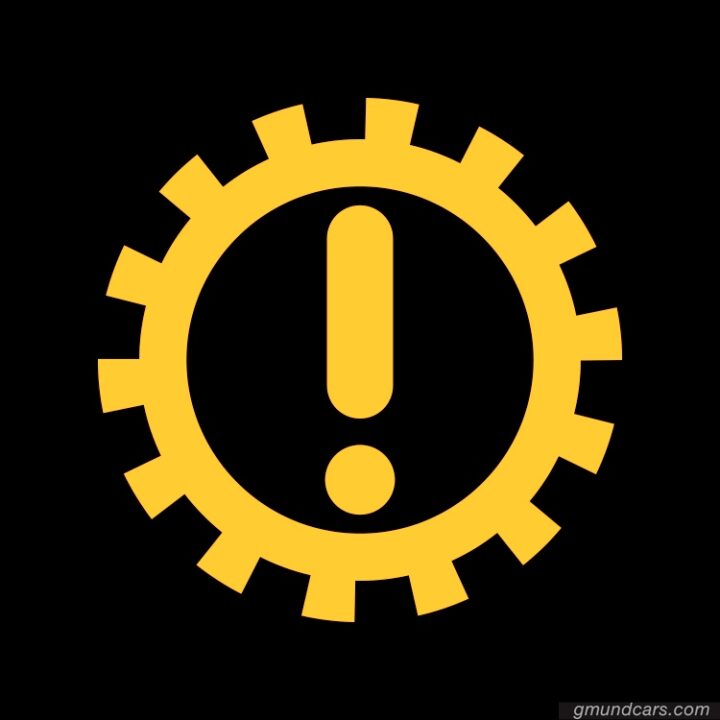
There are sensors in the car to help the engine control unit in making real-time assessments of the car’s condition. Whenever the sensors in the transmission system detect a problem, your warning light will turn on to indicate that the car is low on transmission fluid. This signal turns on the exact moment when a problem is detected but it is still not much severe. So, it is vital for you to immediately stop the car at that moment and check the transmission fluid level.
Overheating transmission
Like how a motor operates, the transmission needs sufficient amounts of fluid to properly function and prevent complications. The transmission fluid provides lubrication to moving parts, enabling smooth performance. If your car has low transmission fluid, the transmission system might not receive enough lubrication, which could cause overheating. Whenever you come across these signs, pull over and let the car cool down to avoid irreparable internal damages.
Strange noise/burning smell
When the car’s transmission fluid level is low, you will hear strange noises like a rattling noise in a rhythmic manner, roaring, buzzing, or humming sounds coming from the transmission. This happens because the low transmission fluid causes the various parts to bang against each other and hence the noise.
Another low transmission fluid indicator is a burning smell emanating from your car. When the transmission fluid is low, friction between the moving parts increases and this heats up the temperature. Whenever you get a burning smell from the car while driving or smoke comes out of the car, then you should immediately stop the car, check the transmission fluid .
Gear shifting problems
Low transmission fluid could cause gear engagement difficulties and inconsistencies, such as delayed or sped-up gear shifting. Due to the lack of transmission fluid, the car could irregularly lurch when shifting gears, messing up the timing. Whether your vehicle is manual or automatic, you can still experience gear-shifting problems if the transmission level is insufficient.
Slipping gear
Gear slippage is one of the most common symptoms of a car short on transmission fluid. Through the help of transmission fluid, a car regulates the hydraulic pressure that supports proper engine running. However, low transmission fluid level can cause gears to slip, resulting in slow vehicle functioning and acceleration failings. Although it might seem like a minor concern, you should get your transmission checked to avoid more expensive repair services. Moreover, gear slippages could also indicate critical damages to the gearwheel’s teeth.
How to check the transmission fluid level
Now that we’ve learnt the signs of low transmission fluid, let’s take a look at how to check the transmission fluid level.
First consideration
Check whether your vehicle comes with a transmission dipstick or not.
Today, many modern vehicle manufacturers have opted to replace the traditional dipstick with electronic sensors, meanwhile, there are still plenty of car models that prefer the old reliable dipstick over the electric sensors. Whatever your car is, this guide will help you to do the job easily.
With a transmission dipstick
With the dipstick, you can check vehicle’s transmission fluid without having to perform any complicated actions.
Preparation
- Gloves
- White clean rag/ tissue
Step by step guide
Step 1: Turn on car engine to normal operating temperature
- Park your car on level ground, turn on your engine, set your vehicle to neutral or park, and warm the engine for a few minutes. For extra safety, put wedges against the car’s front and rear wheels to block accidental movements.
- Then, open the hood. To avoid getting incorrect fluid readings, you should let the engine run and grow warm.
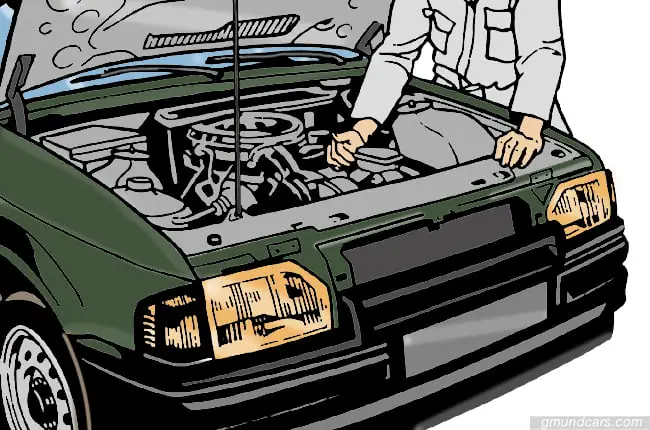
Step 2: Locate the dipstick
In cars with rear-wheel drive, the transmission dipstick is located behind the oil dipstick or near the engine’s rear. To vehicles with front-wheel drive, the transmission dipstick can be found near the transmission system’s front or the transaxle.
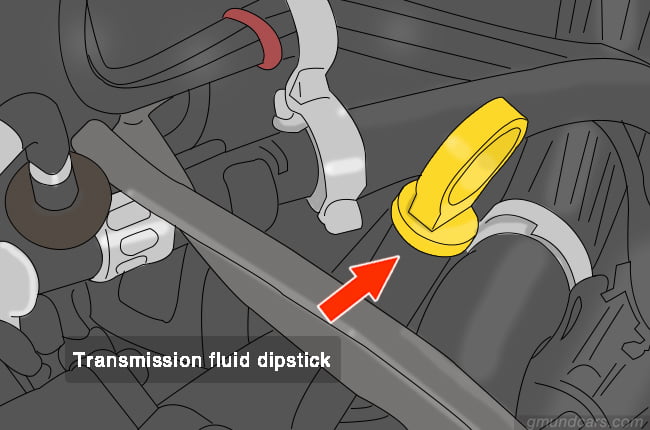
Step 3: Pull out the dipstick and read the indicators

After removing the dipstick from the tube, wipe it with a clean rag and place it back.
Remove the dipstick again, carefully read the transmission fluid level and determine how high the fluid comes up along the markings:
Step 4: Check the fluid level
If the fluid level reads somewhere between the ‘add’ and ‘full’ markings, your transmission contains the average amount. However, if the liquid level reaches the ‘add’ stamp or below it, you need to add more fluid.
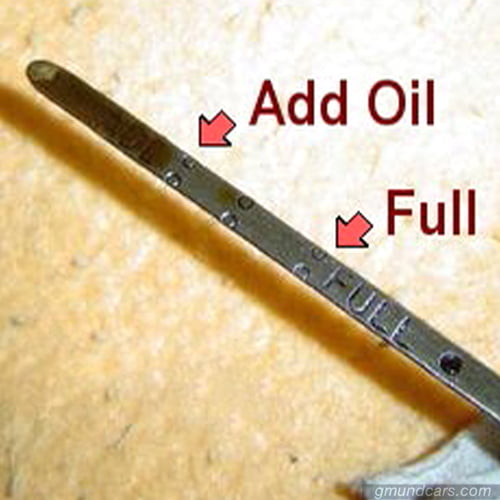
With a scan tool
Consult the car’s manual and determine if your vehicle has a sealed transmission. A sealed transmission usually requires little to no fluid replacement, and changing it requires professional tools and help. It is advisable to take your vehicle to a service shop or dealership. However, if you want to challenge yourself to check your vehicle without the dipstick, refer to my guide below:
Preparation
- Gloves
- OBD2 scan tool
Step by step guide
Step 1: Double-check the dipstick
- Refer your car manual again to confirm if it is a sealed transmission. If your vehicle does not have a sealed transmission, continue locating the dipstick’s location.
- Open the hood to confirm that there is a dipstick or not. The transmission dipstick’s location differs from model to model, and its handle may contain a ‘trans’ or ‘transmission’ label.
- When you ensure that your vehicle does not come with that feature, continue with the process.
Step 2: Plug the OBD2 scan tool
Plug the temperature-scanning tool into your car’s OBD2 port. Through the OBD2 port, you can connect on-board diagnostic devices that gather information on vehicle conditions.
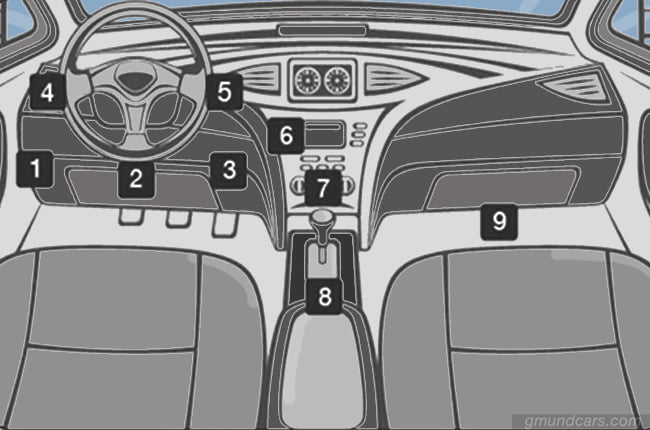
Step 3: Turn on car engine
Turn on the engine. The specialized scanning tool will give you real-time data, including the car’s transmission fluid temperature and more.

Step 4: Check the data
Check the transmission fluid temperature. Although transmission fluid temperatures vary from manual to manual, they should be around 104℉ (40℃).
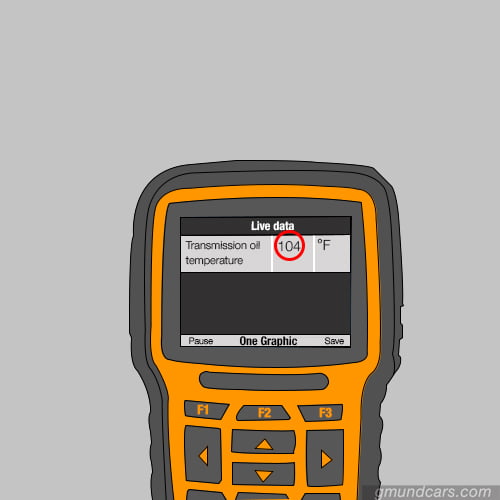
Causes and solutions of low transmission fluid
On top of being familiar with the easily identifiable transmission problem signs, you would benefit from knowing their causes. There are two main reasons behind this problem: Transmission leak and infrequent check.
| Causes | Solutions |
|---|---|
| Transmission pan gasket failure and cracks | Replace a new transmission pan gasket. This job is easy to be fixed yourself at home. |
| Torque converter failure | Replace the torque converter. It is recommended taking your vehicle to shop service or asking for your mechanic assistance. |
| Axle seal failure | Remove the degraded seal using a seal puller and replacing it with a new one. This problem can done yourself without mechanic help. |
| Infrequent check | Regularly check the transmission fluid, make sure the level is always above the standard. |
Often, leakage is the root cause of low fluid levels, and knowing how to identify them aids your repair process. Leaks can stem from many sources, including transmission gasket cracks, torque converter hitches, axle seal problems, and fluid line punctures. To some car owners, a transmission leak might not seem like an urgent issue. However, allowing your car to operate with a leak can induce long-term harm.
Transmission pan gasket failure and cracks
Apart from housing the transmission fluids, the transmission pan also uses a magnet to collect the accumulated sludge. Over time, the transmission pan components can wear out, loosening bolts, producing punctures, and leaking fluids. Other issues, including improper installation, poor-quality manufacturing, and heat overexposure, could create transmission pan gasket leaks. It would help if you kept the transmission pan gasket in mint condition to block dirt from entering and fluids from escaping.
Solution: If your car’s transmission pan gasket contains fractures, you need to replace it, as the fluid will continue to leak if left alone. To fix a cracked transmission pan gasket, you would only need to purchase a new one and secure the bolts in the pan.
Torque converter failure
Besides causing leakages that lead to low transmission fluid levels, a torque converter failure generates other transmission issues. Inside a torque converter, you can find a hydraulic pump that creates pressure for the transmission system. Then, the pressure diffuses the transmission fluids throughout your vehicle’s transmission. Usually, a torque converter failure is due to fractures in its body and frayed needle bearings. In addition to the difficulties in diagnosing leaks within a torque converter.
Solution: When your vehicle is in this case, you need to replace the torque converter. However, fixing or replacing it can be costly and difficult to do if you are not savvy. I recommend taking your vehicle to shop service or asking for your mechanic assistance.
Axle seal failure
The axle seal’s primary function is to prevent transmission fluids from leaking out. Commonly, axle seal failures come from corrosion or incorrect removal and reinstallation. If you suspect that the axle seal is broken, double-check for damp areas, burning smells, and oil stains. When installing a new axle seal, ensure you don’t deform the seal and drop its spring.
Solution: An axle seal failure is an easy fix if you know how to disassemble your vehicle’s axle shaft which connects to the transmission box. And if you do know, it is as effortless as removing the degraded seal using a seal puller and replacing it with a new one. Put the axle shaft back and check the transmission fluid level and you’re good to go.
Infrequent check
For some people, regularly checking the transmission fluid level and any leaks by themselves seems tedious and bothersome to do. They could also have little knowledge to check it themselves and let shop mechanics do the job for them. Whatever the reason is, it is always a good practice for you to learn and regularly apply the basics of how to check transmission fluid level and what to check for.
As simple as checking transmission fluid may seem, this simple task would go a long way of saving you from damage to your vehicle.
How to add transmission fluid
Without transmission fluid dipstick
When your vehicle does not go with a transmission dipstick, adding new fluid is not a job that you can do yourself at home. This requires a special transmission fluid pump machine to pump fluid to your car. I suggest taking your car to a service shop or dealership to do the process.
With transmission fluid dipstick
Preparation
Consult your car’s manual to get the right type and amount of transmission fluid for your vehicle
There are multiple types of transmission fluid, and you must use the right one to avoid damages. When choosing transmission fluid, allow a professional technician, or refer to your car’s manual to select the correct type.
If you don’t have a copy of the car’s manual, you could browse the Internet to find its digital version. You could also contact your car dealer or the car’s manufacturer.
Tools required:
- Funnel
- Rag
- Gloves
Step-by-step guide
Step 1: Open the hood and locate the transmission dipstick
Step 2: Place a funnel into the tub where you pulled the dipstick out. After locating the filler tube, use a narrow funnel with a long spout to add the fresh fluid.
Step 3: Pour the new fluid into the funnel. Slowly pour the transmission fluid to avoid overfilling and monitor the amount.
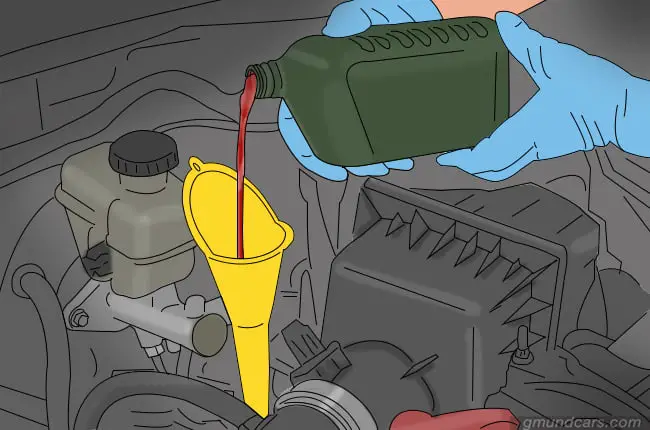
Step 4: Check all the transmission settings. With the engine running, shift through the transmission’s gears to help the newly added fluid circulate. Checking the settings would also help you get an accurate reading.
Step 5: Double-check the dipstick. Through double-checking the dipstick, you can confirm the fluid level and see if you need to add more.
Step 6: Return the dipstick and close the hood. Before returning the transmission dipstick in its place, secure the locks and gasket.
Consequences of low transmission fluid
If your car was low on transmission fluid, it would not be able to shift gears properly. In severe cases where the transmission fluid storage is empty, you would not be able to shift gears at all.
Low transmission fluid level harms your transmission’s internal components, impairs operational efficiency, and worsens the car’s performance in general. Aside from losing power and gear-shifting operations, you could also deal with costly transmission repairs and component replacements.
If you think you have transmission problems, promptly check for issues or get your vehicle to a car service center. Most importantly, remember to look out for low transmission fluid symptoms and quickly address them to keep complications from arising.
Final words
Following regular checking and preventive measures helps you keep your car’s transmission system working correctly in the long run. Every vehicle and every transmission system has its own needs. Remember to consult your car’s manual when taking care of your transmission system.
By knowing the signs and causes of a low transmission fluid level, you can quickly repair potential problems and prevent costly complications from emerging in the future. Don’t let the transmission fluid level get low, and your car would have a longer operational life. Frequently inspecting transmission fluid level can also help your vehicle stay in prime condition and perform better.
FAQs
1. Does the car have to be on when I check the transmission fluid?
This depends on your car’s type. When checking the transmission fluid, most car models require the engine to run for more accurate readings. Before pulling out the dipstick and checking fluid contents, ensure that the engine is warm. However, some car models require a cooled engine when checking transmissions, so check your car’s manual for more details.
2. What happens if you overfill transmission fluid?
Just like having low transmission fluid level, overfilling your transmission system could damage internal components. Excess transmission fluid forms extra air bubbles that could clog up your gears, causing malfunctions. Having the correct amount of transmission fluid improves the transmission system’s functioning.
If you do overfill the transmission fluid, you could resolve it by draining the fluid by taking the pan drain plug out or by siphoning it using a tube.

Hi! I’ve been hearing a buzzing sound from under my car hood whenever I drive since last week. I’m really glad when you mentioned that odd noises is one of the indicators where a transmission repair is probably needed. I will certainly look further into the matter when I meet a nearby mechanic later.